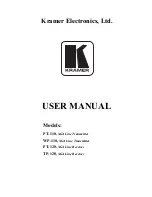
FT-2000
Operating Manual
Vertex Standard Co., Ltd.
16
“Function” key for the optional DMU-2000 Data Management Unit if connected.
30. MODE Switches
A, B Switch
Pressing the [A] or [B] button will illuminate the respective indicator imbedded within
the switch, allowing adjustment of the operating mode on the Main (VFO-A) or Sub
(VFO-B) band. Usually, the [A] button glow Red, signifying Main band (VFO-A) is being
adjusted. Similarly, pressing the [B] button will cause its indicator to blinks Orange for
five second, signifying Sub band (VFO-B) adjustment.
Advice: When changing bands, confirm the [A] or [B] button lighting at first,
then
press
the appropriate [BAND] button, so as to change operating frequencies on the proper
(Main or Sub) band.
LSB, USB, CW, AM/FM, RTTY, PKT Switch
Pressing the [LSB], [USB], [CW], [AM/FM], [RTTY], or [PKT] button will select the
operating mode. Pressing the [CW], [AM/FM], [RTTY], or [PKT] button multiple times
will switch between the alternate operating features that can be used on these modes
(covered later).
31. QMB (Quick Memory Bank) Switch
STO (Store) Button
Pressing this button copies operating information (frequency, mode, bandwidth, and
also repeater direction/shift frequency and CTCSS functions on the FM mode) into
consecutive QMB Memories.
RCL (Recall) Button
Pressing this button recalls one of up to five Quick Memory Bank memories for
operation.
32. NAR (Narrow) Switch
In the SSB/CW mode on the Main band (VFO-A), this button is used to set the
bandwidth of the EDSP (digital) IF filters to a user-programmed bandwidth (default
values are SSB: 1.8 kHz and CW/RTTY/PSK: 300 Hz).
Advice: When [NAR] has been engaged, the [WIDTH] knob will be disabled, although
[SHIFT] knob still works normally.
In the SSB/CW mode on the Sub Band (VFO-B), this button is used to toggle the
receiver’s bandwidth between wide (2.4 kHz) and narrow (1.0 kHz).
















































